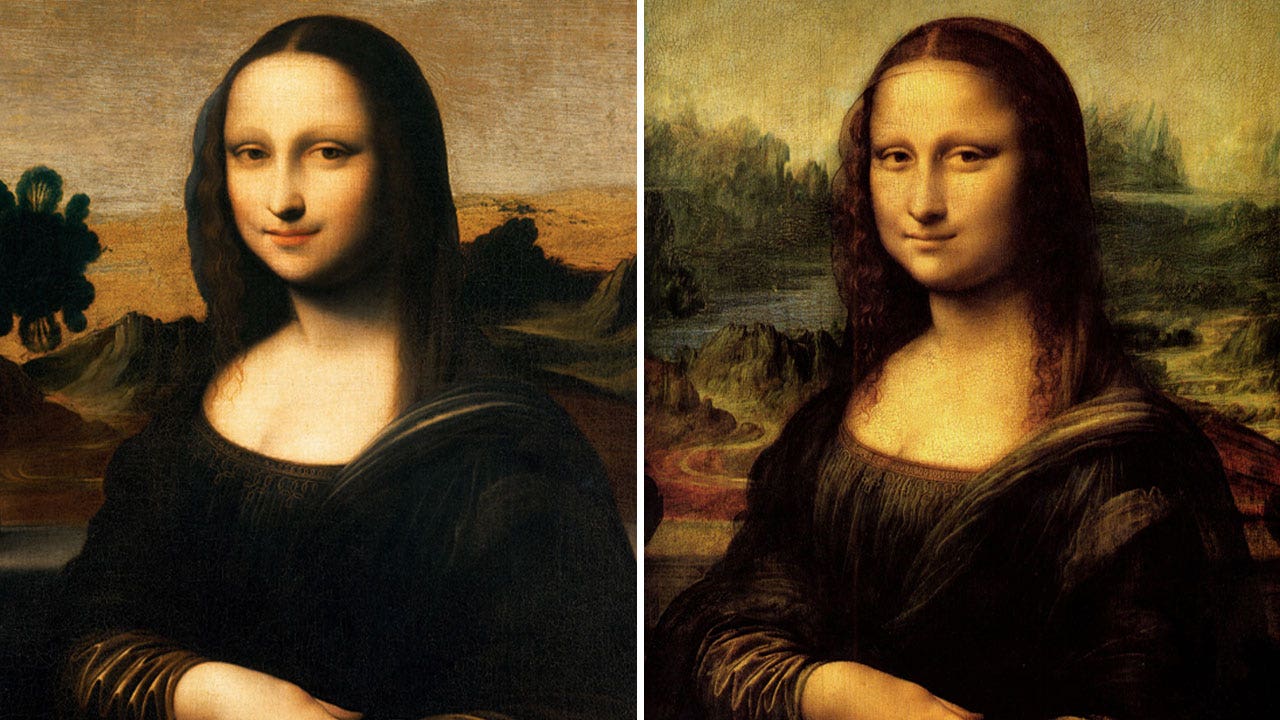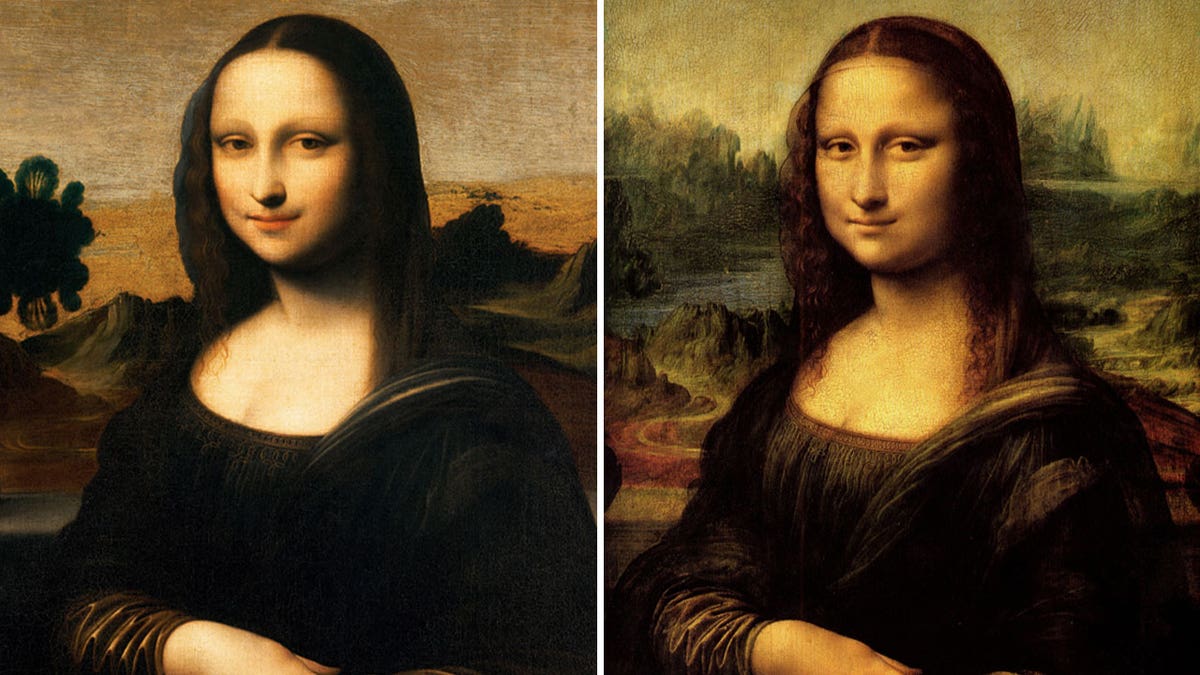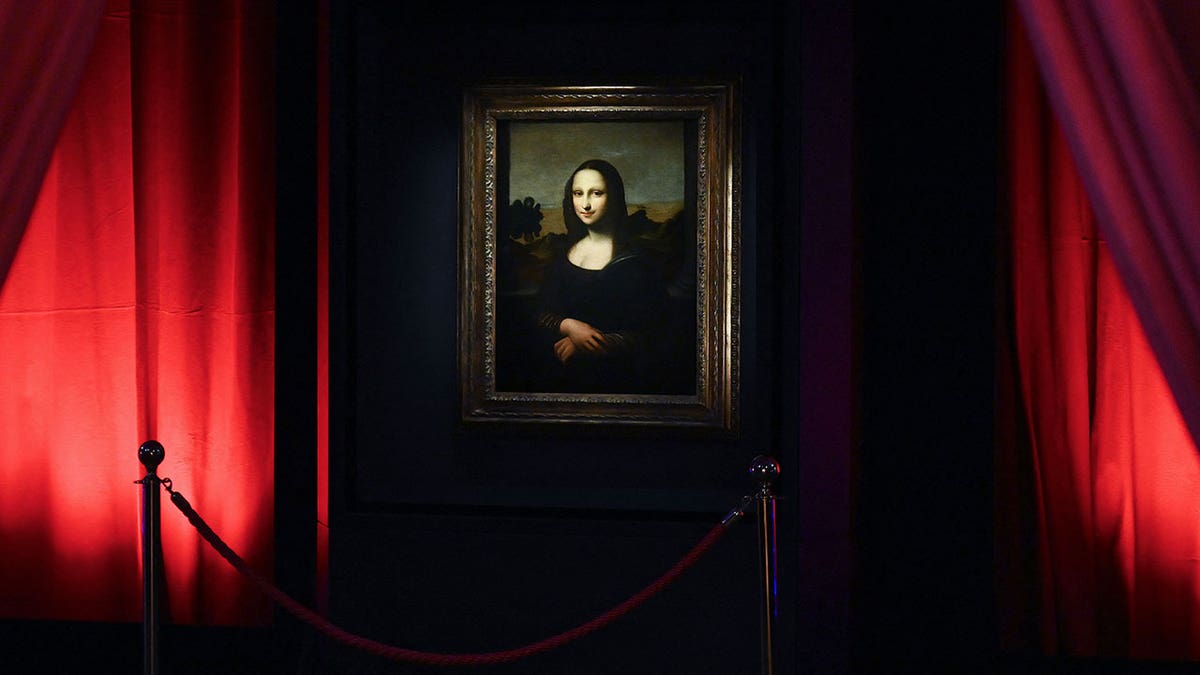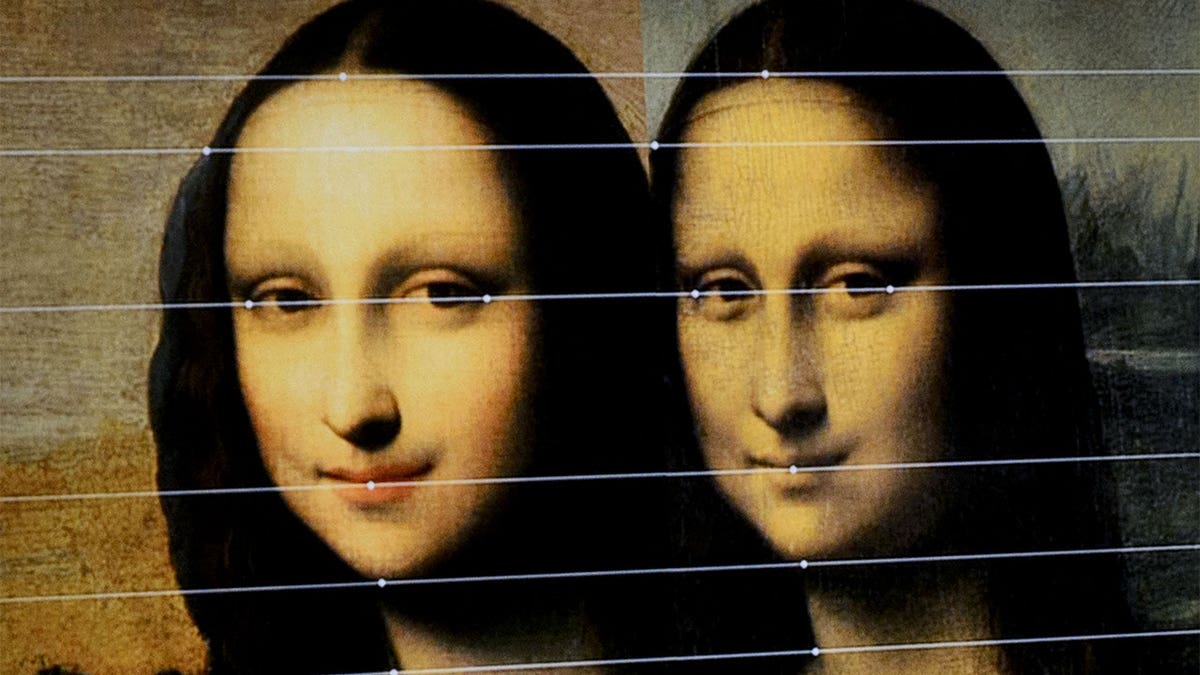
The ‘Mona Lisa’ is smeared in cream by protester
A man disguised in a ladies’ wig jumped up from a wheelchair to throw cake at the ‘Mona Lisa’ in the Louvre Museum in Paris on Sunday in what was apparently meant as a climate protest. (@Luke_sundberg_ / Body Cams+ / TMX)
A painting that came on the scene in the early 1900s is gaining sensation with its public display in an Italian city, with some claiming the portrait could be the work of Leonardo da Vinci himself, depicting a younger Mona Lisa.
Dubbed the “Isleworth Mona Lisa,” the painting was put on public view in Turin last month and strongly resembles Leonardo’s 16th century, half-length portrait masterpiece of an Italian woman known as the Mona Lisa.
The “Isleworth Mona Lisa” painting — believed to have been created in the early 16th century — is thought to have been brought from Italy to England in the late 1700s and came into public view in 1913 after it was acquired by English artist Hugh Blaker from an upscale home in Somerset.
Named after Blaker’s studio in Isleworth, West London, the painting now belongs to private owners who wish to share the so-called Leonardo work with the public, an effort that’s reportedly being championed by the Mona Lisa Foundation in Zurich.
SCIENTISTS USE X-RAYS TO REVEAL CLUE ABOUT TECHNIQUES DA VINCI USED WHEN PAINTING ‘MONA LISA’

The “Isleworth Mona Lisa,” left, is shown alongside Leonardo da Vinci’s “Mona Lisa,” which is on display at the Louvre Museum in Paris. (Getty Images)
The foundation, according to a report by The Guardian, believes it could be the original “Mona Lisa.”
“It argues that it’s the first version of the famous painting, depicting a younger Lisa than the one Leonardo worked on all his life and had with him at the chateau of Amboise where he spent his last years, and which now attracts an unending selfie-snatching crowd in the Louvre,” the outlet noted of the foundation’s beliefs about the questionable painting.

This photograph, taken in Turin, Italy, on Nov. 23, shows the “Isleworth Mona Lisa” displayed during the exhibition “Leonardo Da Vinci La Prima Monna Lisa” (The First Mona Lisa) at the Palazzo della Promotrice delle Belle Arti. (MARCO BERTORELLO/AFP via Getty Images)
But some individuals in the art arena have their doubts about whether the “Isleworth Mona Lisa” is actually the work of Leonardo, a renowned artist known for his expressive artwork who is believed to have died from a stroke in 1519 while in France.
“In my view, there isn’t a chance in hell that this is a Leonardo. The claims being made for the Isleworth Mona Lisa seem implausible,” said Jonathan Jones, a writer for The Guardian. “It seems inconceivable to me that the most subtle, observant and relentlessly patient of artists would have produced such a lousy, lackadaisical image of a human face.”
“Leonardo did great portraits of women before he even started the Mona Lisa, and in each one he created a haunting inner presence: the pale melancholy of Ginevra de’ Benci; the self-possessed energy of Cecilia Gallerani,” he added. “The so-called Isleworth Mona Lisa is, by contrast, completely lacking in personality. Her grin looks inane and fixed, unlike the true Mona Lisa’s deeply studied smile which reflects Leonardo’s anatomical dissections of human facial muscles, right down to the lips.”
WHO WAS THE MONA LISA IN REAL LIFE? STORY BEHIND LEONARDO DA VINCI’S FAMOUS PAINTING

This picture taken on a TV screen on Sept. 27, 2012, in Geneva shows comparison lines between the “Isleworth Mona Lisa” (left) and the Louvre’s “Mona Lisa.” (FABRICE COFFRINI/AFP via Getty Images)
Jones, who believes the newly discussed artwork is a “bad copy” or a “deliberate fake,” also said he believed the shape of Mona Lisa’s face in the alleged Leonardo painting “seems wrong,” saying it “doesn’t have the classical proportions or fleshy reality that Renaissance artists aimed for.”
The difference in facial shape, according to the Mona Lisa Foundation, is because the painting depicts the subject in her earlier years. “It claims to have proof that Leonardo did two versions of his masterpiece and this is the first, begun in Florence in 1503,” Jones wrote in his report for The Guardian on the matter.
Leonardo’s proven, well-known “Mona Lisa” artwork has been on public display in Paris’ Louvre Museum on and off since 1797. The early 1500s artwork is believed to be the most visited painting in the world, garnering millions of viewers at the museum each year.

Visitors observe the painting “Mona Lisa” by Italian artist Leonardo da Vinci on display in a gallery at the Louvre in Paris on May 19, 2021. (Getty Images)
Though the “Isleworth Mona Lisa” is not currently for sale, it could carry significant value should the anonymous sellers decide to part with it.
“Salvator Mundi,” a long-lost commissioned Leonardo painting of Jesus Christ believed to have been created in the late 1400s to the early 1500s, sold in 2017 at auction in New York for $450.3 million.
CLICK HERE TO GET THE FOX NEWS APP
Similarly, the “Mona Lisa” hanging in the Louvre was valued at $100 million in 1962, the equivalent of around $1 billion today.





